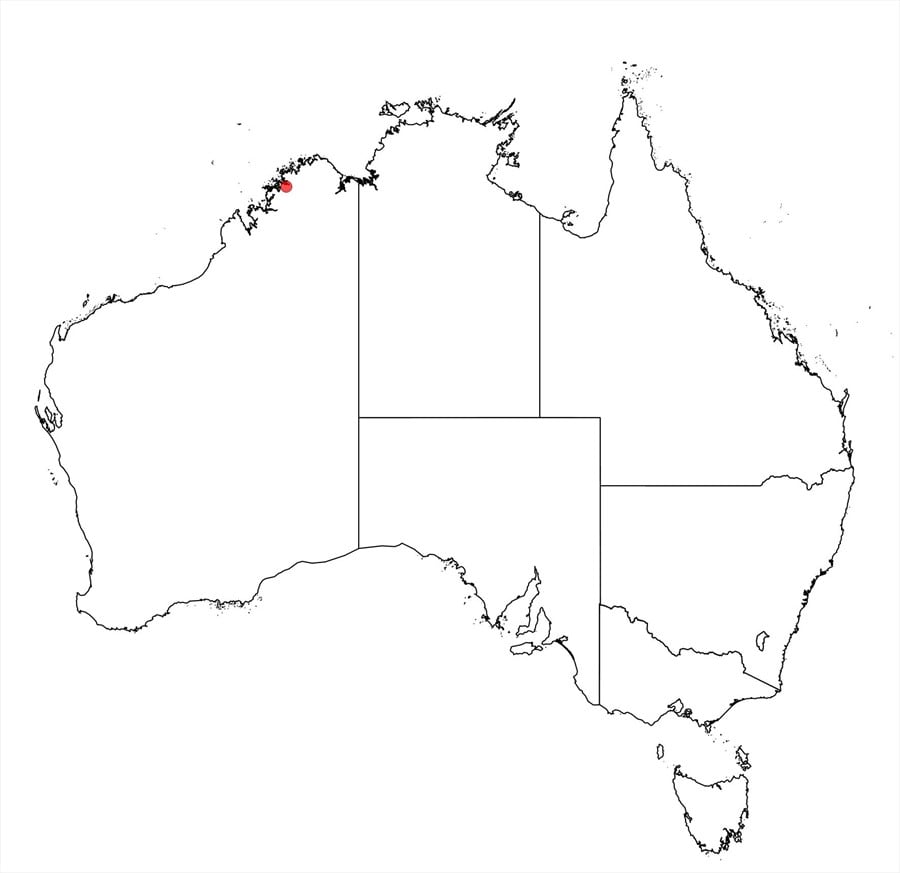Acacia anserina Maslin, M.D.Barrett & R.L.Barrett
WATTLE
Acacias of Australia
Common Name
Hairy Sandstone Wattle
Family
Fabaceae
Distribution
Occurs in the W Kimberley region of northern W.A. in the Princess May Ra.
Description
Erect, openly branched shrubs to 1 m tall. Branchlets ribbed when young (ribs not resinous), densely pubescent. Stipules persistent, 1–1.5 mm long. Phyllodes dimidiately widely elliptic or sometimes widely obovate, the upper margin prominently rounded and lower margin ±straight, (3–) 4–6 mm long, 2.5–4 mm wide, apices distinctly and excentrically mucronate with the subulate mucro 0.5–1 mm long and shallowly to strongly recurved (sometimes into an open circle), rather wide-spreading, puberulous; longitudinal nerves numerous, rather indistinct, anastomoses few or absent; gland basal, indistinct. Peduncles 6–8 mm long, densely pubescent; heads globular, 17–25-flowered, light golden, the relatively large buds wide-spreading and narrowed towards their apices. Bracteole clearly exserted in young buds, laminae triangular-trullate, red-brown and distinctly acuminate. Flowers 5-merous; calyx ½ length of corolla, gamosepalous, shortly dissected into narrowly triangular, red-brown lobes, calyx tube with tolerably long, erect hairs at apex otherwise glabrous; petals glabrous and 1-nerved. Pods (photographs seen) narrowly oblong, seemingly flat, neither raised over nor constricted between the seeds, 4–5 mm wide, red-brown, puberulous, longitudinally reticulately nerved. Seeds not seen.
Phenology
The type collection comprises mature inflorescence buds, a few heads at anthesis and occasional pods.
Habitat
Known only from the type which grew in small, fire-protected pocket of dense vegetation on a gentle slope in an area surrounded by sandstone ridges. Surveys of similar sites in the vicinity have not located any other populations.
Specimens
W.A.: [precise locality withheld for conservation reasons], 23 Jan. 2010, M.D.Barrett & M.Maier MDB 2744.
Notes
The wide-spreading, tapered flower buds that impart a star-like appearance to the unopened heads of A. anserina are similar to those of A. stellaticeps.
Appears to be most closely related to A. perpusilla which is most readily distinguished by being glabrous in all parts; see B.R. Maslin, M.D.Barrett & R.L.Barrett, Nuytsia 23: 566–567 (2013), for further discussion.
Conservation
Acacia anserina is listed as Priority Two under Department of Parks and Wildlife Conservation Codes for Western Australian Flora.
FOA Reference
Flora of Australia Project
This identification key and fact sheets are available as a mobile application:
URL: https://apps.lucidcentral.org/wattle/
© Copyright 2018. All rights reserved.






